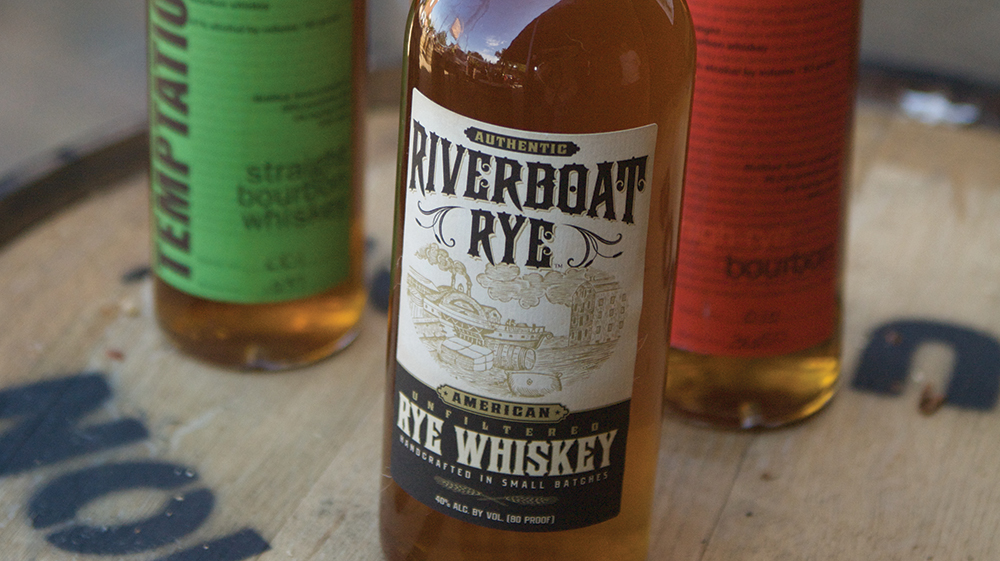Rye Not?
A welcome resurgence of good rye whiskey.
Article by Fred Minnick
Rye whiskey’s roots run deep in our great land. Throughout the 1600s and 1700s, settlers found that rye could not only grow anywhere but it also thrived in the Northeast’s harsh winters. So, naturally, early Americans harvested rye for bread, beer, and (of course) distillate. Pennsylvania, Maryland, and Virginia were home to early rye distilleries with Pennsylvania rye being commonly referred to as Monongahela, named after the distillery’s water source—the Monongahela River.
George Washington distilled Secale cereale L. and one of Washington’s pals, Thomas Jefferson, who was more of a wine drinker, sent bushels of rye to a Mrs. Meriwether to be distilled. Pioneers traveled West with jugs and barrels of Monongahela to barter, trade, and drink. “The best and greatest quantity of rye whiskey is made on this (Monongahela) river,” wrote traveler Zadok Craker in the 1817 book, The Navigator.
After Prohibition, rye lost a little of its luster, but survived with such brands as Mount Vernon, Town Tavern, Rittenhouse, Old Overholt, and Hunter Baltimore Rye. Since rye had a connection to George Washington—thus the Mount Vernon brand—the makers were among America’s true pioneers in marketing. According to a 1935 Hunter Baltimore Rye Whiskey ad: “In the Gay Nineties, and on through the Spanish-American War when Theodore Roosevelt took his Rough Riders to Cuba, Hunter Rye was in demand nation-wide, and had become well-known in London. ‘First Over The Bars,’ it had won a world reputation for taste among English-speaking peoples—it was in fact the largest-selling rye whiskey in the world.” Rye whiskey people could sure tell a story.

Despite its former popularity, Hunter Baltimore Rye, like most ryes, is no more. A combination of dwindling demand and increased Canadian rye production brought the end of many U.S. rye distilleries. Rittenhouse and Old Overholt exist in labels, because spirits companies purchased their trademarks, but their former Pennsylvania locations are gone.
Thankfully, the past decade has seen a resurgence in rye whiskey, which the federal government defines as: Whiskey produced at not exceeding 80 percent alcohol by volume (160 proof) from a fermented mash of not less than 51 percent rye and stored at not more than 62.5 percent alcohol by volume (125 proof) in charred new oak containers (aka barrels). Fairly recently, because there was so little rye demand, the large distilleries only spent one or two days distilling rye during the distilling season, making sure bourbon received priority. Now, Jim Beam (Old Overholt, Jim Beam Rye, and Knob Creek Rye), Heaven Hill (Rittenhouse), and Buffalo Trace (E.H. Taylor Rye, Thomas Handy, and Sazerac Rye) distilleries must increase rye whiskey still time to meet consumer demand.
With that said, the largest distiller making rye whiskey actually doesn’t take credit for it. MGP Ingredients Distillery in Lawrenceburg, Indiana, a former Seagram’s facility, contract distills and sells bulk rye whiskey stocks to independent bottlers, such as Redemption Rye, and large national brands, such as Bulleit Rye. Much like the food companies that create the private labels for grocery stores, MGPI creates whiskey for bottlers and is one of the most underrated distilleries in the world.
I’m extremely hot on two MGPI ryes right now. James E. Pepper 1776 15-year-old rye whiskey is an incredible example of a perfectly aged product, featuring a nose of allspice, caramel, and toffee, with a juicy, balanced palate that is smooth, spicy, well-rounded, and just gorgeous. It’s hard to find, but worth the hunt. Another MGPI rye I love is Redemption Straight Rye Whiskey Barrel Proof. Typically, a whiskey this hot—specifically at 122 proof—burns your tongue straight out of your mouth, especially a rye, which is naturally spicier than other whiskeys. Not so: Redemption’s barrel proof is as smooth as riverbed limestone, delivering a nose of lavender, caramel, vanilla, and cotton candy with a hint of Jolly Rancher watermelon. On the palate, Redemption’s heat is hardly detectable—to a whiskey drinker anyway!—and the herbal qualities with spice just open up to a beautiful finish.
Wild Turkey 101 Rye, Russell’s Reserve Rye 6 year old, E.H. Taylor Straight Rye Whiskey, Rittenhouse Straight Rye Whiskey, and Knob Creek Straight Rye Whiskey lead Kentucky’s small crop of this beverage. You can now find ryes distilled in Arkansas, New York, and Pennsylvania, so the category is blossoming into what it once was. George Washington would be proud.





